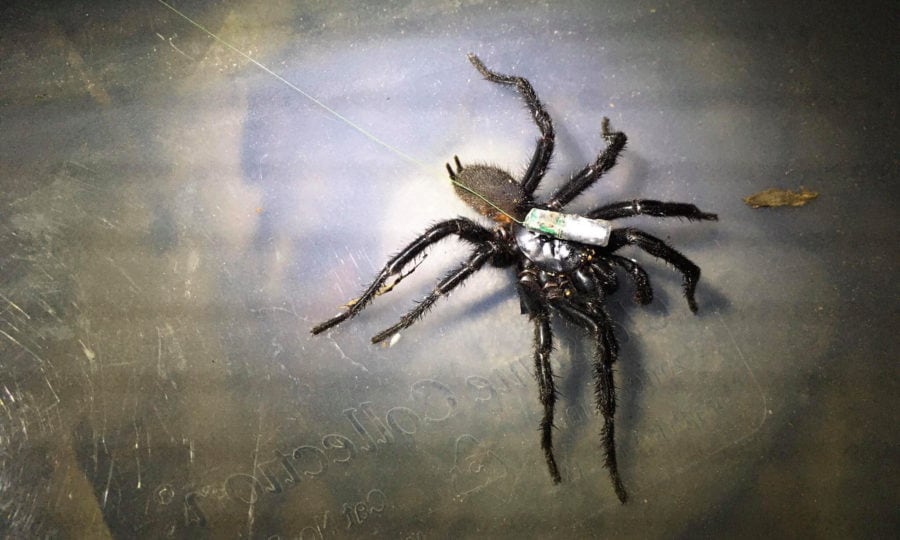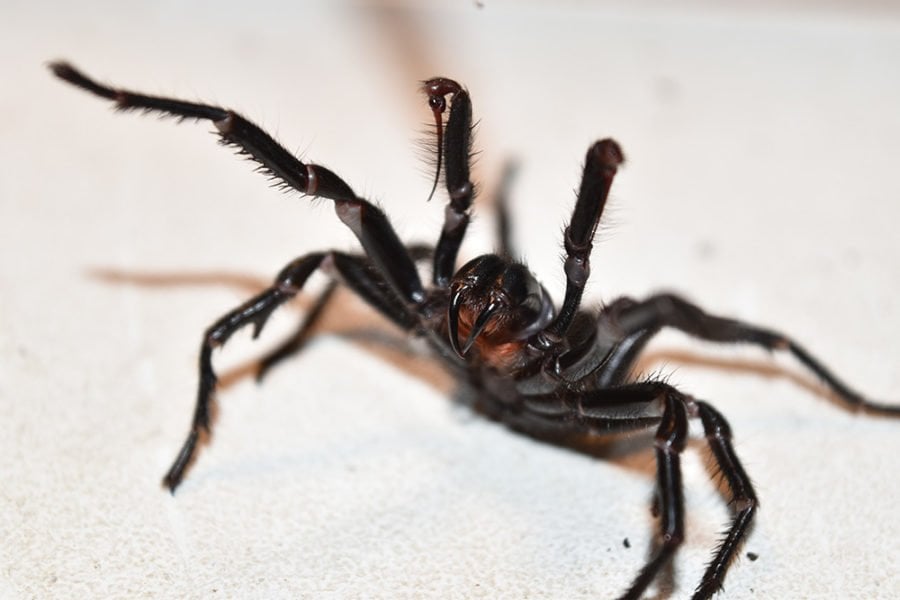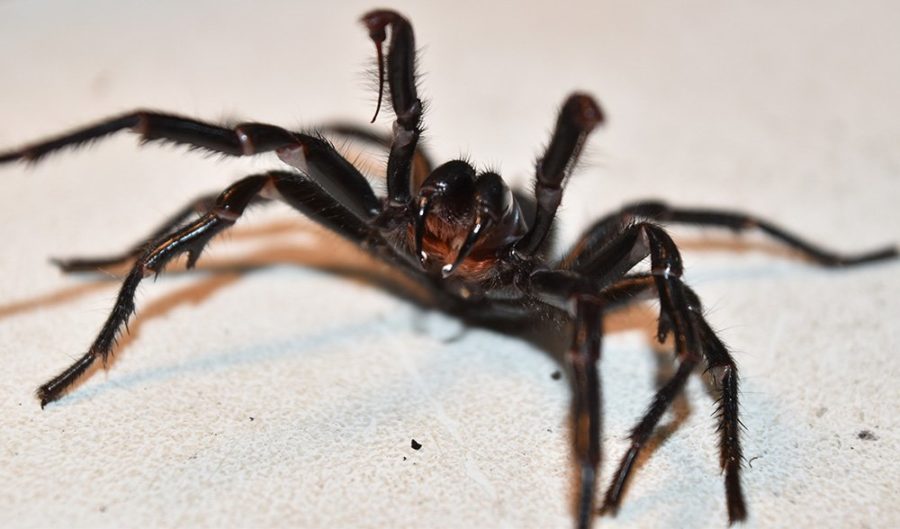Scientists are attaching trackers to funnel-web spiders. This is why

FOR A SPIDER WITH global notoriety, the Sydney funnel-web (Atrax robustus) is surprisingly under studied. We know little about their populations and behaviours.
“There are plenty of studies on their venom, but not enough on other aspects of their biology,” says evolutionary biologist Bruno Alves Buzatto, who lectures in Macquarie University’s Department of Biological Sciences.
“They seem to be very long lived, to grow and mature very slowly, and to not move much. All these things make them hard to study.”
Since moving to Sydney in 2018, Bruno has been fascinated by the Sydney funnel-web, the most dangerous spider in the world, capable of killing a human.
Together with PhD student Braxton Jones, who had tens of funnel-webs living under his bed in small terraria, and arachnologist Danilo Harms, Bruno set out to follow the movements of the funnel-web.
“Braxton was the expert in finding and rearing them, Danilo is the taxonomy and population genetics expert, and I would focus on the reproduction and behavioural ecology component,” Bruno says.
Specifically, the team wants to understand the life-history and reproductive behaviour of the funnel-web.
“I want to get a better understanding of males’ movements during the breeding season. How far do they go? What affects their mobility?
“Answering these questions is relevant for keeping the public safer and better informed about the risks of having males walking into people’s houses and causing accidents.”
So how do you track the most deadly spider in the world? It involves what Bruno describes as a “very delicate operation”.
The tracker, which is 0.15g in weight, has to be glued to the spiders cephalothorax (its back). This involves pinning the spider to a towel or sponge and gently placing the transmitter.
According to Bruno, this was the easy part. The trouble came when a broad-tailed gecko decided to eat the spider and the $420 tracker.
Eventually, the gecko pooped out the tracker (in good condition) and the gecko was sent on its merry way.
The study is ambitious in scope, covering the funnel-web’s behaviour, life history and population structure, but the team hope that, following this initial study, researchers will build on it and be able to predict the risks of encounters between funnel-webs and humans.
This project is funded by the Australian Geographic Society.



